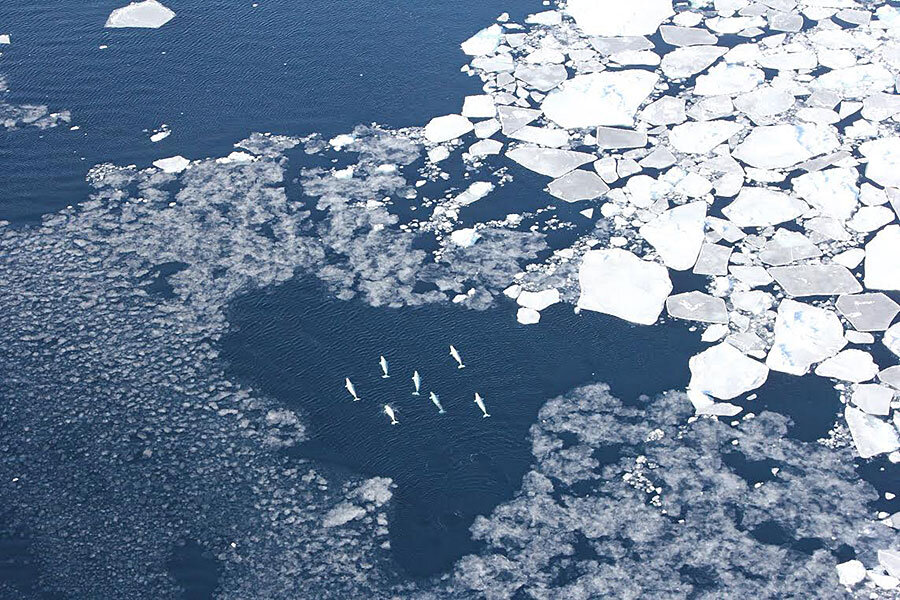Scientists offer a rare window on secret lives of beluga whales
Loading...
New research has shed some light onto one of the Arctic’s most elusive inhabitants: the mysterious milky-white beluga whale.
The importance of this research, published last December in Marine Ecology Progress Series, lies not only in illuminating the life of such an endearing creature, but also in what it can tell us about Arctic ecology, and the ways in which that may be changing due to global warming.
Beluga whales are a critical part of the Arctic ecosystem, essential to both the natural ecology and the Inuit communities scattered across this region – a part of the world rapidly changing as the sea ice retreats and human access becomes more feasible.
“You hear a lot about polar bears, seals and walruses, animals which are directly related to the sea ice,” says lead author Donna Hauser, a doctoral student in the University of Washington’s School of Aquatic and Fishery Sciences, in a telephone interview with The Christian Science Monitor.
“But we don’t really understand as much about how belugas are affected by changing sea ice.”
Marine animals in general are a critical resource – nutritional, cultural, spiritual – for native tribes living throughout the Arctic circle, and shifting distribution patterns as a result of climate change could have significant impact.
This study has helped describe the seasonal migration patterns of the belugas, and while some subpopulations stay put, living in waters that stay warm enough year round, most do engage in migrational behavior.
“What we’ve heard from the Alaskan hunters is that you’ll find belugas where there’s food,” says Barbara Mahoney of the National Oceanic and Atmospheric Administration (NOAA) Fisheries department in Alaska, in a telephone interview with the Monitor.
“Belugas will spend the summer in one area, where there’s food, but then they’ll follow the freezing of the sea to overwinter further south.”
Of equal interest in an ecological sense is the position that belugas hold in the food chain, and this latest research provided important insight into the whales’ foraging dives.
These mammals will plumb the ocean to depths of almost a kilometer in search of arctic cod, a fish whose importance as a keystone species is only now being fully appreciated.
Beluga whales do not occupy the head of the food chain, however, particularly with fluctuating climate patterns. As global warming pushes the ice further north, killer whales are following, happy to feed on belugas as their ranges begin to overlap. Belugas can also fall prey to polar bears.
"The ice is really dynamic as it's breaking up in the spring," Ms. Hauser tells the Monitor. "The belugas migrate along channels, or 'leads', between the ice floes where polar bears can potentially grab whales as they surface for air."
This particular study has been a picture of collaboration, utilizing data that stretches back to 1993, gleaned in partnership with Alaska Native communities and Aboriginal tribes in Canada, whereby beluga whales have been tagged and tracked.
Over the years, that engagement between nations has also extended to Russia, the third country to border beluga territory.
While there is one population of the whales thought to be endangered, just off Anchorage in Alaska, the bulk of the 20 to 25 separate groups dotting the Arctic are thought to be relatively stable.
And though Hauser does also study other apex predators, she has reason to be partial to these snow-colored mammals:
“Belugas have the coolest skin,” Hauser tells the Monitor. “They have thick blubber as an adaptation to keep them warm in their cold, icy environment, so if you push down a little, it jiggles – kind of like really dense jell-o.”






